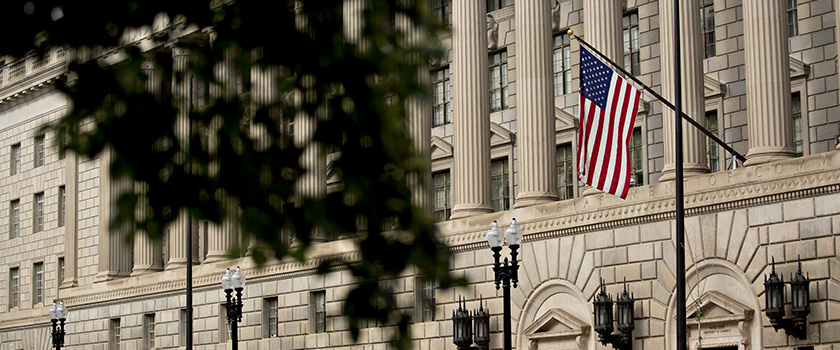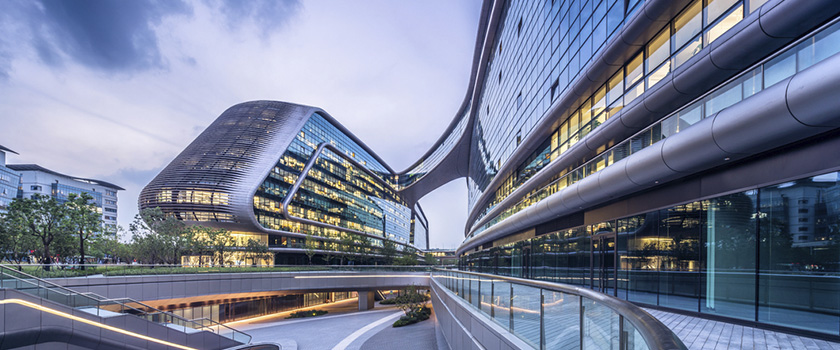Asia Macro - China: Domestic demand takes over for the next leg of the recovery
Key takeaways
-
GDP growth expanded 18.3% y/y in Q1-21, favoured by base effects. However, GDP remained flat in sequential terms at 0.6% SA q/q, owing to virus control measures enacted during Chinese New Year.
- Going forward, we expect GDP will slow to 6.1% y/y in Q2 and 5.5% y/y on average in the remainder of 2021. Sequential growth will accelerate to 1.5% in the remainder of 2021. No changes to our baseline scenario of 8.6% in 2021.
- Domestic consumption will gradually take over from exports and manufacturing in the next leg of China’s recovery. Key activity indicators such as imports and retail sales confirmed this shift in March.
- We continue to see opportunity in the next leg of China’s transformation, but investors ought to remain selective. A domestic focus on soft consumption and early-stage innovation may provide shelter from potential risks.
Looking beyond Q1-21 GDP numbers
China’s Q1-21 GDP rebounded to 18.3% year-on-year (y/y) in Q1-21. Despite the outcome being slightly below the consensus forecast of 18.5% y/y (UBP: 18.0%), this constituted the highest rate of expansion since the National Bureau of Statistic (NBS) started reporting GDP statistics in the 1980s. Much of this upside can be traced back to a significant base effect, following a sharp contraction in Q1- 20, owing to an unprecedented nationwide lockdown aimed at curbing the spread of COVID-19. In sequential terms, economic growth came in mostly flat at 0.6% quarter -onquarter (q/q), below consensus estimates of 1.4%. We had expected a slower pace of sequential growth for two main reasons: firstly, we are coming from a very high base in Q4- 20, with stellar performance on the export front leading the recovery. Moreover, localised virus containment measures implemented during the Chinese New Year period this year had dragged down consumption during the festive season.
Going forward, we expect that GDP will slow to 6.1% y/y in Q2-21, and average 5.5% y/y in the remainder of 2021, below the official growth target of 6.0%. However, due to the large base effect in Q1-21, annualised growth will comfortably exceed the official target, coming in at 8.6% in 2021. On the contrary, sequential growth will accelerate from the low levels observed in Q1-21, averaging 1.5% q/q in the remainder of 2021.
Economic recovery was led by the secondary sector in Q1- 21, which expanded 24.4% y/y in Q1-21, up from 6.8% in Q4-20. This can be traced back to another quarter of good performance on the export front, with the latter expanding 70% y/y during the same period. This helped to support manufacturing, with industrial production expanding 24.5% year-to-date (YTD) y/y in March. We expect that manufacturing activity will remain supported by sustained demand from key markets in Europe and North America, with exports growing at an average rate of 7.0% in 2021, a slower rate of growth that factors in unfavourable base effects starting H2-21. As a result, industrial production growth will remain high but slow to 9.0% y/y in 2021.
A pickup in construction also helped to support the secondary sector in Q1-21. Fixed Asset Investments (FAI) expanded 25.6% YTD y/y in March, led by the property sector, where investments also expanded by 25.6% YTD y/y. We expect that tightening on both the property and fiscal policy fronts will exert some downside pressure on FAI growth in 2021. However, some of this downside risk will be offset by better corporate earnings, which should support private sector capital expenditure (CAPEX) in the medium term. As a result, we expect that FAI growth will stabilise around 7.0% y/y in 2021.
China’s Purchasing Manager’s Index (PMI) rebounded to 52.5 in March. However, a closer inspection of the data reveals a more nuanced message. The employment subcomponent of the NBS PMI remained subdued at 50.1, barely entering expansionary territory. Likewise, Caixin’s private gauge, which captures a larger share of Small and Medium Enterprises (SMEs), declined to 50.6 from 50.9 in February. SMEs account for over 80% of private sector employment in China, so remain critical for China’s bid to stabilise its labour market and promote domestic consumption.
The tertiary sector expanded by 15.1% y/y in Q1-21, up from 6.7% in Q4-20, but slower than the rate of growth registered in the secondary sector. Most of this upside can be traced back to retail sales, which reached 33.9% YTD y/y or 34.2% y/y in March. This was the only indicator that exceeded consensus expectations, in line with our view that domestic consumption will take over from manufacturing and exports for the next leg of China’s recovery. Moreover, retail sales are set to experience a large favourable base effect in 2021, following 10 months of contraction in 2020. Compounded with strengthening domestic demand, this should result in faster retail sales growth of 15.0% y/y on average in 2021.
However, better retail sales growth in March can’t be extrapolated linearly. Firstly, as PMI figures highlighted, the employment situation remains fragile. March numbers were also skewed by pent-up domestic demand, following the lifting of virus-containment measures in late February – this will phase out in April. Exports rebounded in Q1-21, but imports also improved to 27.3% y/y during the same period, accelerating to 38.1% y/y in March. That said, imports were skewed to the upside by higher commodity and semiconductor prices, so do not entirely reflect recovering domestic demand. We expect import growth to outpace export growth in 2021, averaging 10.0%. This will result in a smaller current account surplus of 1.0% of GDP in 2021, down from 1.5% in 2020.
Long is the road: policy normalisation to be more gradual
Markets have become wary that expectations of higher growth in the United States (US) and rising inflation will force the US Federal Reserve to raise interest rates, replacing optimism about China’s economic recovery in Q1- 21 with fears about tighter domestic liquidity. Our Financial Conditions Index does indeed point to a tightening of conditions in March and early April. This was led by rising US 10-year yields and a decline in outstanding aggregate financing growth to 12.3% y/y in March, down from 13.2%. Moreover, M2 growth also slowed to 9.4% y/y in March, down from 10.1%. We believe that the pace of tightening may have been excessive, as the recovery remains subject to some headwinds. The People’s Bank of China (PBOC) has resumed policy normalisation since the beginning of the year and we do not expect a U-turn. However, two recent developments suggest a slower pace of policy to avoid impacting the nascent recovery in domestic demand:
Firstly, tighter domestic liquidity has already resulted in an increase in corporate bond defaults, as expected (see our December report). Property developers accounted for 26.7% of total defaults YTD, up from 14.1% in 2020. This is worrying as property developers need to repay USD 53.5 billion in offshore debt in 2021. In addition, a probe into China Huarong has brought to the fore concerns surrounding Chinese Asset Management Companies (AMCs), many of which also have ties to the real estate market. We do not anticipate that this will turn into full-blown systemic shock, as policymakers will undoubtedly step-in to ameliorate contagion risks to other areas of the Chinese credit market such as State-Owned Enterprises (SOEs) and Local Government Financing Vehicles (LGFVs). Indeed, the China Banking and Insurance Regulatory Commission (CBIRC) intervened on April 16 to instruct banks not to withhold loans to Huarong and its subsidiaries. During times of distress, companies call upon their credit lines with banks, exacerbating liquidity concerns.
The equity market also saw a bout of volatility as a result of tighter liquidity in March, which was amplified by ongoing uncertainties surrounding China’s anti-trust campaign on its technology companies. China needs to boost equity finance in order to wean companies off their historic dependency on bank loans. This effort will not be helped by the anti-trust drive, requiring PBOC to keep conditions accommodative for longer. If China’s ‘Big Tech’ companies are not able to generate and redeploy capital into high growth industries, premium valuations could suffer despite attractive earnings prospects in the short-term. The latter is a concern given that China’s technology giants account for a very large proportion of the total market capitalization. Not surprisingly, investors did not take well to the news. MSCI China fell almost 20% in late March and early April, after rallying 90% from its trough in March 2020.
Implications for investors
China’s Q1-21 GDP outturn was in line with our baseline scenario. As a result, we maintain our growth forecast for 2021 at 8.6%. This means that China and the US will remain growth engines in the post-pandemic environment that will characterise the economy in 2021.
Despite slower headline growth, a pickup in sequential activity, expectations of stronger earnings and a slower pace of policy exit are all factors that remain supportive of modest performance in the equity space in Q2-21. At the very least, we do not expect to see a big drawdown from current levels. Moreover, Chinese equities have experienced a compression in PE multiples following from higher volatility in the past month, making them more attractively priced relative to global peers. We continue to see cyclical and strategic opportunity in the next leg of China’s transformation, but investors ought to remain selective. A domestic focus on soft consumption and earlystage innovation may provide shelter from potential regulatory and external pressures ahead.
On the fixed income front, the premium of China’s 10-year government bond yield over that of the US fell to 155 bps. Theoretically, this means that the USD carry trade could become less profitable. However, diverging inflation trajectories between the US and China will sustain real rate differentials. We expect that China’s 10-year bond will reach 3.30% by the end of 2021, so investors looking to deploy cash for carry may still consider this option given lower risk levels on the sovereign front. The same may not hold for corporate credits. HY spreads remain above their long-term average at 790 bps, skewed by Chinese property companies. Despite that, we do not expect a systematic credit event, but near-term uncertainties remain.









